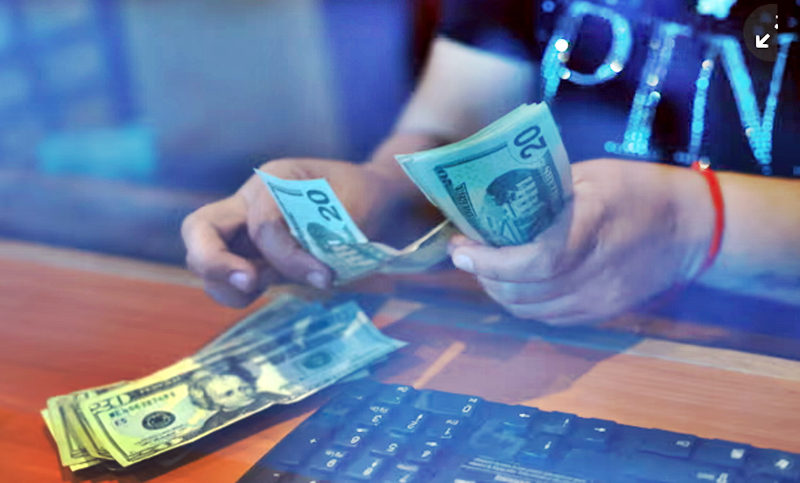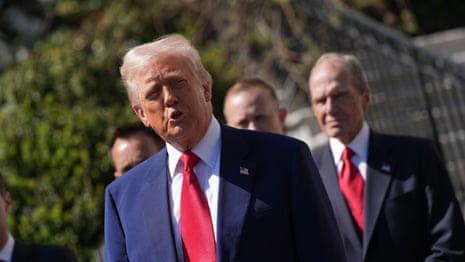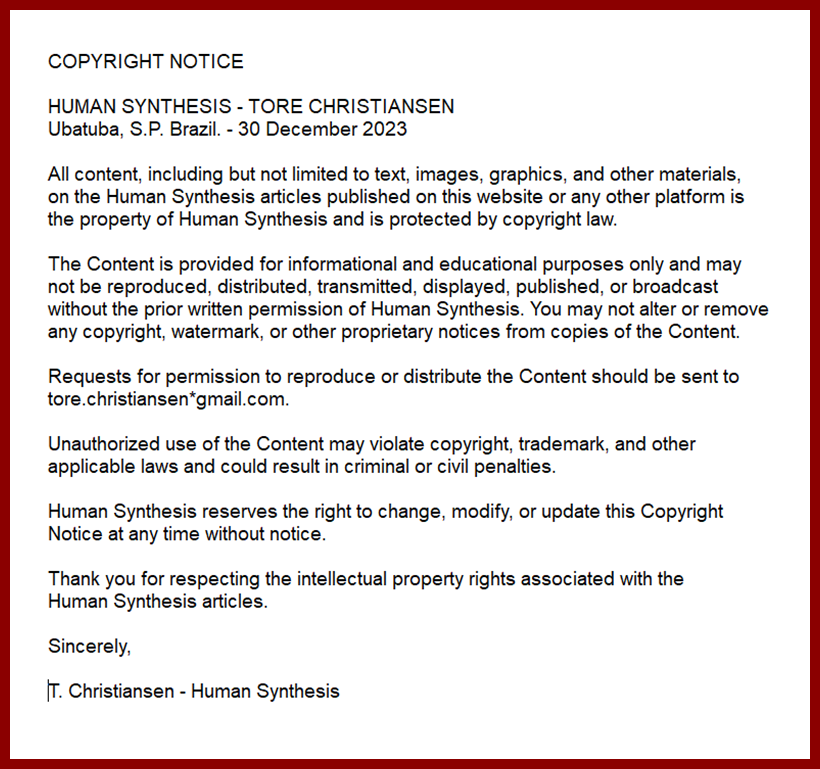‘The damage is done’: Trump’s tariffs put the dollar’s safe haven status in jeopardy

By Guardian-Richard Partington -Fri 11 Apr 2025 17.17 BST
Amid the global fallout from Donald Trump’s “liberation day” tariff announcement, it appears nowhere is safe. Crashing share prices, a sell-off in bonds and currency chaos erasing trillions of dollars of wealth in a matter of days. Experts say fears about unpredictable policy are creating crisis of confidence in US bonds once seen as ‘risk free’
On Friday, the dollar fell by more than 1% relative to a basket of other currencies to reach its lowest level in three years, compounding an almost 10% slide since the start of the year. In the space of a week, it has lost about 3 cents against the pound and 4 cents against the euro.
Even after the president’s partial U-turn – freezing tariffs at 10% on all US imports except those from China for 90 days – markets swung from relief rally to fresh rout, as investors questioned the once unthinkable: could the US dollar be losing its unassailable safe haven status?
“The damage has been done,” said George Saravelos, the head of foreign exchange research at Deutsche Bank. “The market is reassessing the structural attractiveness of the dollar as the world’s global reserve currency and is undergoing a process of rapid de-dollarisation.”
Unlike in a typical market sell-off, the Trump crash has included US equities, government bonds, known as treasuries, and the dollar losing value in sync. That is unusual because investors normally plough into dollars and Treasury bonds in periods of uncertainty and financial distress.
Trump was playing chicken with tariffs. Then he chickened out. Steven Greenhouse
For the past 80 years, the dollar has held a status as the world’s primary reserve currency; used as a store of value around the globe, as the grease in the wheels of the financial system and as the medium of exchange in trade.
The belief is that a currency backed by the government sitting atop the world’s pre-eminent economy, with the deepest capital markets, most powerful military and a political system that respects the rule of law is about as good as things get.
However, Trump is changing all that, having slapped punitive tariffs on the US’s traditional allies and enemies alike.
Raghuram Rajan, a former governor of the Reserve Bank of India and an ex-chief economist at the International Monetary Fund, said the currency crisis stemmed from investor worries over the US economy and Trump’s erratic policy changes.
“There is a worry about how volatile and unpredictable US policy has become, as well as increasing fears that if the high level of tariffs are to stay, the US will head into a recession,” he said. “[Though] of course, tariff policy seems to be a moving target.”
The sudden loss of confidence has been stark in the US Treasury market, widely considered to be the most important in the world because investors normally use it as the “risk free” benchmark to determine the price of every other financial asset.
In the sharpest weekly move since 1982, the yield – in effect the interest rate – on 30-year US government bonds rose from about 4.4% to 4.8%. The yield on 10-year bonds has also risen.

Investors say a lot is going on. While a clear confidence crisis is brewing, the turbulence for the US dollar and treasuries also reflects the likely economic damage Trump’s policies will inflict; including a more than 50-50 probability of a US recession and the rising chance of the Federal Reserve cutting interest rates.
Amid the wider market rout – with more than $5tn (£3.8tn) wiped off from US share prices – the sell-off in bonds also reflected hedge funds rushing to sell Treasuries to cut back on risky trades, as well as investors dashing for cash.
“I think Trump’s trade views are folly and madness. He is going to harm the US economy and has created a needless crisis,” said Mark Sobel, a former top US Treasury official who is now the US chair of the Official Monetary and Financial Institutions Forum, a central banking thinktank.
“My basic thesis is that the dollar will remain the dominant global currency for the foreseeable future as there are not viable alternatives. But I think that Trump, by weakening America’s economic and institutional foundations by not being a trusted partner, is undermining the underpinnings of what has given rise to dollar dominance.
“His actions over the last week will decidedly accelerate the erosion in dollar dominance as well as give rise to a lot more market volatility globally.”
Figures compiled by the IMF showed the US dollar being the reserve currency of choice for countries around the world, accounting for almost 60% of global foreign exchange reserves. The euro is a distant second, at about 20%, followed by the Japanese yen at almost 6%. Sterling – the global reserve currency before the US’s rise to dominance after the second world war – accounts for about 5%.
Sobel said there had been a recent uptick in the use of the Canadian and Australian dollar, as well as Swiss francs and the yen. The euro has made little ground, while the Chinese yuan – backed by a communist government, with an economy relatively closed to the wider world – still lacks global favour.
Some within Trump’s administration, however, view the dollar’s status as the international reserve currency with distaste, as another sign of the world freeloading off the US.
The president has long wanted a weaker dollar with the idea it would help make US goods cheaper to overseas buyers, supporting domestic manufacturing and helping to reduce the country’s trade deficits.
Stephen Miran, the chair of the Council of Economic Advisers, has suggested a plan with parallels to the 1985 Plaza accord – when the US agreed with Japan, Britain, West Germany and France to depreciate the dollar – in what could be called the “Mar-a-Lago accord” after Trump’s Florida residence.
Typically trade deficits – when imports exceed exports – balance over time, as they create downward pressure on a country’s currency (as the result of demand for foreign currency exceeding that of domestic currency). However, the US’s “exorbitant privilege” atop the global reserve currency – guaranteeing dollar demand – has enabled the country to run a persistent trade deficit since the 1970s.
Many economists see little problem with this; if consumers are benefiting from cheaper imported goods.
There are also fears among investors that the US could pursue a strategy of forcing other countries to pay for the “exorbitant privilege” of using the dollar as the reserve currency. That, however, would come with severe damage for the world economy, while further undermining confidence in the dollar.
“The world should be prepared [for this],” said Karsten Junius, a chief economist at J Safra Sarasin Sustainable Asset Management. “We consider it likely that the US will try to combine preferential tariff treatment, access to its market and financial infrastructure to countries that follow the US in isolating China.
“Countries would need to take sides, which would be particularly difficult for European and east Asian countries that have equally important relationships with both the US and China.”
In response to the dollar’s uncertain future, the EU in particular is looking at contingency plans. José Luis Escrivá, the governor of the Bank of Spain and a member of the European Central Bank’s governing council, told the Financial Times the bloc could emerge as a more attractive alternative.
“We can offer a very large economic area and a solid currency, which benefit from the stability and predictability which result from sound economic policies and the rule of law.”
Pascal Lamy, the former EU trade commissioner and ex-head of the World Trade Organization, also said Trump’s trade war could lead other countries to work more closely together.
“The EU is the obvious candidate to rally a number of others. It won’t work if China does it or even if India does it,” he said.
“It is an American crisis. It’s not a global crisis. The US is 13% of world imports. But there is no reason for the 87% remaining to be contaminated by these voodoo economics.”

Guardian-Richard Partington
Is BRICS a Threat to the U.S. Dollar Today?
Short answer: Not yet a direct threat, but it’s becoming a strategic challenge.
Let’s break it down:
🔎 What Is BRICS Doing?
BRICS (Brazil, Russia, India, China, South Africa — now expanded to include countries like Egypt, Iran, Ethiopia, and others) has taken clear steps toward reducing dependence on the U.S. dollar:
- Promoting trade in local currencies
- Example: China-Brazil trade in yuan and real
- India-Russia trade in rupees and rubles
- Developing alternative financial systems
- Talks of a BRICS common payment system
- Cross-border digital currencies being explored
- Calling for a "BRICS currency"
- The idea has been discussed but is not yet real
- Key barriers: lack of a unified monetary policy, political differences, trust issues
💸 The Dollar’s Current Position
- Still dominant:
- ~90% of global forex transactions involve the USD
- ~60% of global central bank reserves are in USD
- Most global trade (especially oil) is still in dollars
- But:
- Dollar dominance is eroding slowly, not collapsing
- More countries are diversifying reserves
- U.S. sanctions have pushed countries like Russia, Iran, and China to seek alternatives
🚧 Why BRICS Isn’t a Full Threat Yet
- BRICS lacks:
- A common currency or central bank
- Strong internal cohesion (China and India, for instance, have border disputes)
- Deep and liquid financial markets comparable to the U.S.
- Trade in local currencies is growing, but still small-scale relative to the global economy.
🧭 Strategic Importance
BRICS is laying the groundwork for a multipolar financial world, not a sudden collapse of the dollar. But in the long term (5–15 years), it could:
- Challenge the dollar’s role in global trade settlements
- Reduce U.S. influence via sanctions and SWIFT
- Encourage the use of gold, yuan, and digital currencies as alternatives
🔮 In Summary
| Feature | BRICS Today | USD Today |
|---|---|---|
| Trade Power | Growing | Dominant |
| Reserve Currency Role | Minimal | Very Strong |
| Global Trust & Liquidity | Limited | Very High |
| Future Threat to USD? | Potentially | Yes (long term) |
